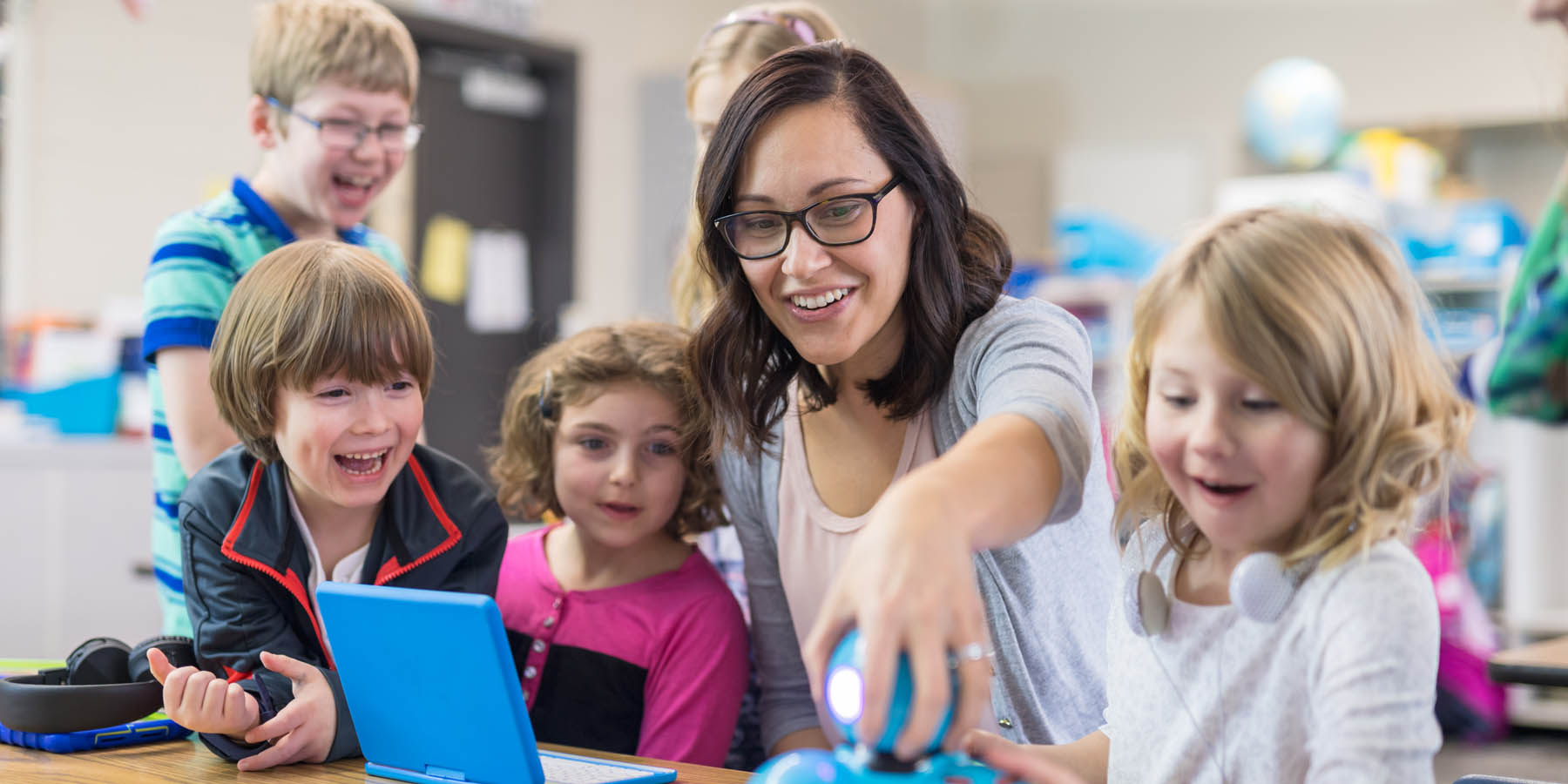How to create a safe digital space in your classroom as an ECE
Digital tools and technology are all around our children, but they’re not always something to be feared. Technology will inevitably be a part of their lives as they grow up, and it will influence how they learn, interact with others, and perform tasks.
As an ECE, you play an important role in children’s exposure to digital tools, and teaching them how to use them responsibly.
Keep reading for our top tips on encouraging the safe use of technology in your preschool or Montessori classroom.
Enhancing learning with technology
Digital tools, software, and games can enhance the learning curriculum. When balanced with real-life interactions and projects, they get the best of both worlds: learning to use technology and the fine motor skills and movement learned through hands-on activities.
This generation of children is already seeing increased technology use, with nearly all children in Canada exposed to screens by the age of 2 (and only 15% of children aged 3-4 meet screen time guidelines of less than 1 hour per day). While usage is up, it may not all be bad, as some screen time and technology are enhancing their learning experience and preparing them for our digitally conscious world.
Regardless, we feel it’s still important to balance technology and screen time with traditional play and hands-on education and experiences.
Here are six ways you can support the safe use of digital tools for teaching in your classroom:
1. Set expectations with students (and parents)
At the start of the school year, send families a list of guidelines and rules for technology use in the classroom. Let parents know that children may use school-approved digital devices and technology in the classroom for learning and development, but children are not be allowed to use their personal digital devices (like learning tablets) from home. You may wish to have parents sign a permission form agreeing that their children can use supervised tech in your classroom.
Also, discuss with your students how you expect them to behave around tech in the classroom. For example:
- Personal tablets from home are not to be used or brought to school.
- No drinking or eating while using classroom tablets
- Children must always wash their hands before and after using classroom technology.
2. Create non-tech blocks of time
When scheduling lessons and classroom activities, it’s important to maintain a balanced approach. If your classroom uses technology like tablets to enhance learning, schedule more non-tech blocks than tech blocks, and dedicate certain days of the week to traditional hands-on learning and play only. This approach encourages students to learn in different ways, without over-reliance on technology.
Hands-on activities are also important for helping children develop fine motor skills, communication skills, emotional regulation, and teamwork from physically active learning.
3. Teach safe online communication
It’s never too early to teach children how to behave online. They can already understand concepts like “stranger danger” at the playground, so it’s conceivable they can understand how to be aware of strangers online, too.
If children are using technology at home that includes voice chat, encourage parents to turn off this feature or closely monitor their use. Remind children to practice stranger danger when talking to online friends and not share anything personal (like their real name, school, or city).
As a parent or educator, your role in creating a safe space for children to ask questions about their online experiences is crucial. Foster a classroom environment where they feel comfortable discussing what they see or who they meet online with you or their parents.
4. Encourage watching educational videos
Many children love watching movies on their tablets or TV. While these fun shows are entertaining, introduce them to educational videos where they learn something new. Here are a few popular channels and creators of online educational content for kids.
Interactive YouTube or GoNoodle videos can be a great tool to lead your class in mindfulness exercises, stretches, and fun dance and exercise routines. These videos not only make learning fun but also encourage physical activity.
5. Use technology to enhance parent communication
Many parents want regular updates on how their children are doing in the classroom. You can use software to send parents photos of their children and message them with important classroom information and announcements. You can send messages to all parents at once (like class reminders and newsletters) or individual parents (to share photos of their child).
Several user-friendly digital communication portals, such as ClassDojo, ClassTag, and Google Classroom, are perfect for school use. These platforms help you keep parents stay updated on their child’s school life.
6. Model safe digital behaviour
Your students love you! Children model the behaviour of adults they admire. This is an excellent opportunity to show them how to use technology safely.
As an educator, this means not using your phone during classroom hours. If you have a computer in the classroom, don’t use it all the time and be available for students.
Where to learn more about becoming an ECE in British Columbia
Did you know you can get your ECE or Montessori teacher education here in BC? Capital College has over eight programs designed to help you become a great early learning educator.
Our ECE programs give you the knowledge and skills to work in licensed childcare settings such as preschools and daycares and to contribute to the well-being of children, families and their communities. Become an Early Childhood Assistant in as little as five weeks, get your full ECE in 52 weeks, or seek your ECE Diploma in 80 weeks.
With your ECE teacher education, you can begin teaching in preschools and Montessori classrooms, helping students learn to use technology and digital devices safely.
Apply to our ECE or Montessori programs today to get started on this rewarding career path.

